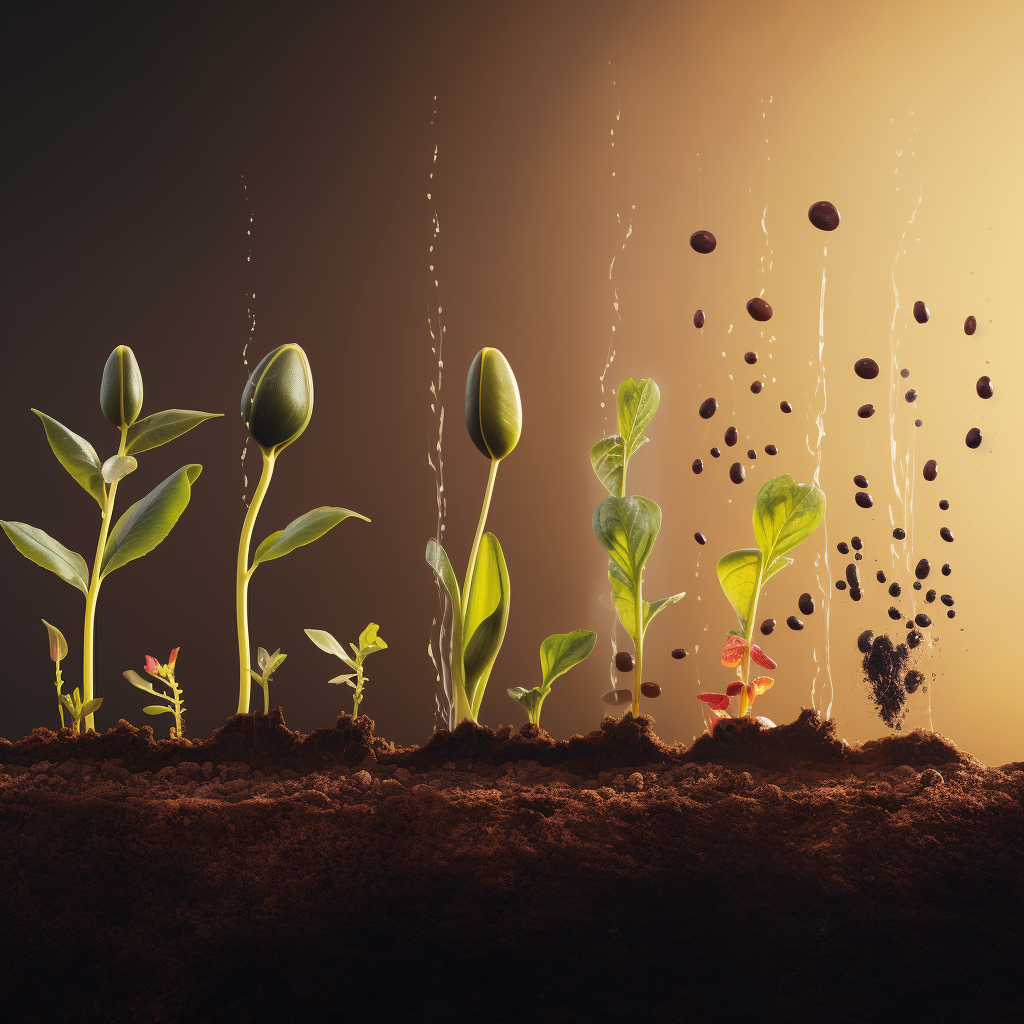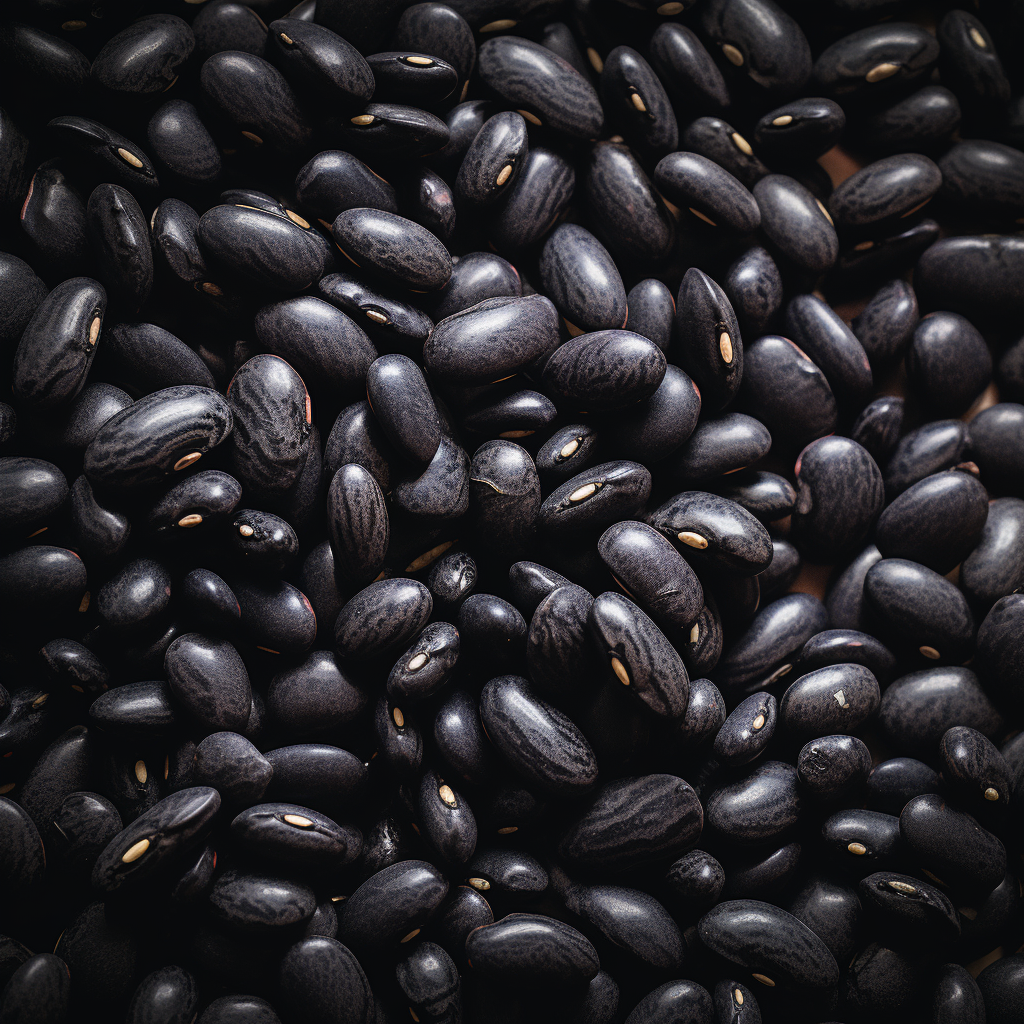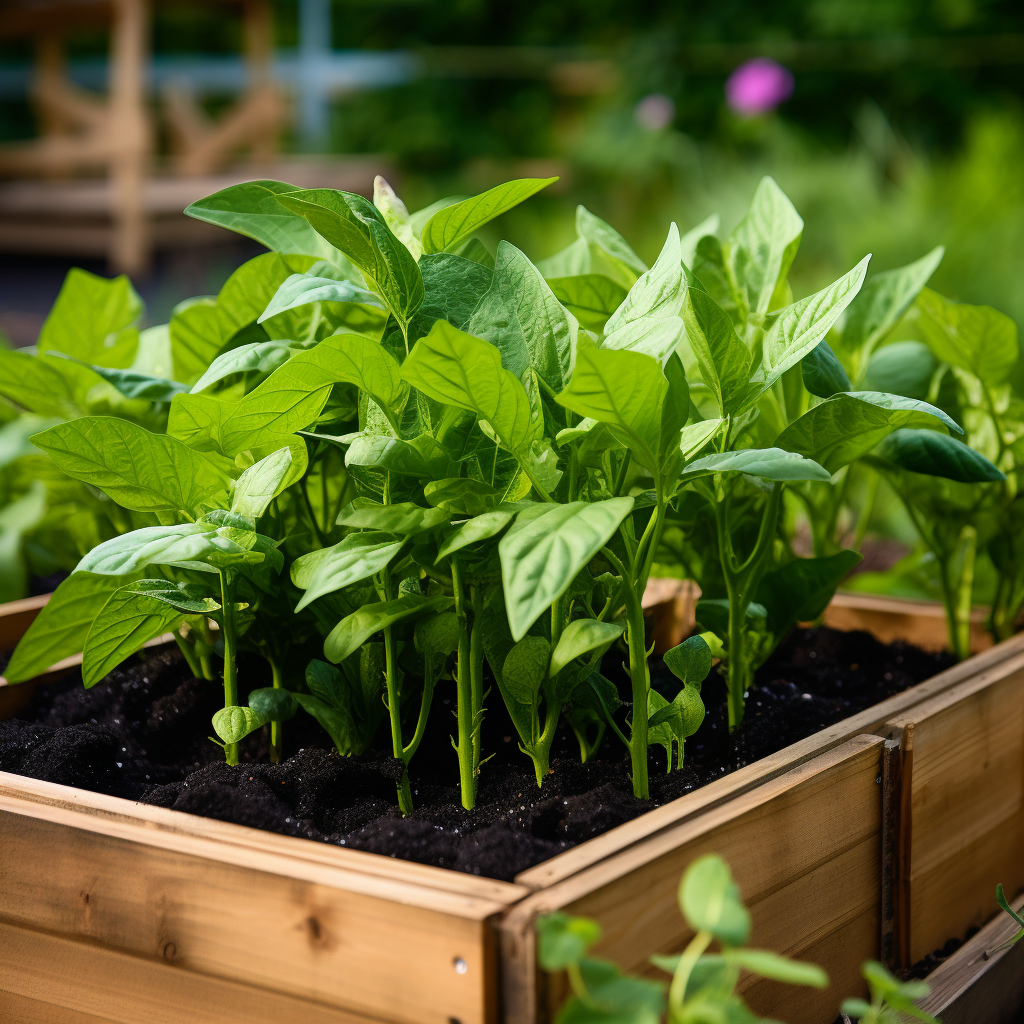
Black beans, a staple in various cuisines worldwide, not only delight our taste buds but also present an excellent opportunity for home gardeners. These versatile legumes, originating from Central and South America, have long been cherished for their rich, meaty texture, enhancing soups, burritos, and an array of culinary delights.
In our journey into the realm of growing black beans, we unravel the secrets to cultivating this remarkable crop. Often overshadowed by their close relative, snap beans, black beans thrive in home gardens, offering a rewarding and straightforward cultivation process. By understanding their growth cycle, preferences, and simple care, you can enjoy a bountiful harvest of these nutritious and flavorful beans.
Join us as we delve into the intricacies of cultivating black beans, providing a comprehensive guide from seed to harvest. Embrace the rich history of black beans, their distinct characteristics, and the delight of cultivating these resilient plants in your own garden. Whether you’re a novice gardener or a seasoned pro, this guide is tailored to elevate your understanding of growing black beans, promising an enjoyable and fruitful journey from seed to savory harvest.
Understanding Black Beans: An Exploration of Origin and Varieties
Exploring the Roots
Black beans, scientifically known as Phaseolus vulgaris, have a rich heritage tracing back to the heart of Central and South America. Originating from the same species as snap beans, these legumes distinguish themselves by their use: black beans are primarily grown for their dried seeds rather than their immature pods. Their cultivation process differs, requiring patience as they take longer to reach maturity compared to their snap bean counterparts.
Unveiling Varieties for Home Gardens
While commercial growers have access to a variety of black bean types, home gardeners often favor the Black Turtle beans. This heirloom variety, featuring bush or semi-runner plants, stands as an ideal choice for those venturing into home cultivation. With its low maintenance and productive nature, the Black Turtle bean offers an excellent starting point for cultivating black beans in a garden.
The preference for full sun and fertile soil defines the thriving conditions for these beans, fostering an environment where each plant boasts a yield of 25 to 36 pods, each containing 6 to 8 seeds. While they don’t require trellising, providing support through posts or bamboo stakes can elevate their productivity. Understanding these nuances sets the stage for a successful black bean cultivation journey.
Stay tuned as we dive deeper into the nuances of planting and nurturing these beans, unlocking the secrets to a thriving black bean garden right in your own backyard.
Planting Black Beans: The Foundation for a Flourishing Crop
Timing is Everything
The optimal time to sow black bean seeds is a pivotal consideration for a successful harvest. Spring ushers in the ideal planting window once the threat of frost has passed. However, a word of caution: these seeds thrive in warm soil, demanding a temperature range of 68 to 80°F (20 to 27°C) for successful germination. Rushing the seeds into the ground prematurely, when the soil remains excessively cool or damp, can spell disaster, potentially promoting seed rot. Patience is the key to ensuring the best possible start for your black beans.
Choosing the Perfect Site
Selecting an appropriate site for your black bean crop is essential. As warm-season vegetables, black beans crave at least six to eight hours of direct sunlight daily. Optimal growth also relies on well-draining soil; heavy clay soils are not conducive to their development. For those utilizing raised beds, amending the soil with an inch of compost and possibly inoculating the seeds with rhizobium bacteria can substantially bolster yield, preparing the ground for a flourishing black bean crop.
Seeding Techniques
Direct sowing remains the typical method for black bean cultivation. Plant the seeds at a depth of half to one inch, spaced three inches apart, and maintain row spacing of 15 to 18 inches. This strategic arrangement ensures that while the canopies of the bean rows shade the soil to discourage weed growth, the plants do not compete excessively for water and nutrients. Thinning the plants to six inches apart after successful germination further optimizes their growth potential.
For those looking to gain a head start on the growing season, starting black bean seeds indoors under grow lights about three to four weeks before the expected last spring frost presents an advantageous option. However, be mindful when transplanting as disturbing the roots can potentially set back the seedlings.
With the groundwork laid for planting black beans, the next stages involve nurturing these seeds into healthy, thriving plants. Stay tuned for more insights into caring for your burgeoning black bean crop.
Caring for Growing Black Beans: Nurturing Your Crop to Abundant Yield
Watering Essentials
Maintaining optimal moisture levels is a critical facet of black bean care. With 90% of their roots situated in the top two feet of soil, ensuring consistent and adequate hydration is paramount. During dry periods, deep watering becomes essential, supplementing rainwater to sustain healthy growth. A simple technique to gauge moisture is inserting a finger into the soil a few inches deep; dry soil indicates a need for watering. Mulching with straw or shredded leaves not only retains soil moisture but also minimizes water requirements.
Understanding the growth stages of black beans is key. During pod development, these plants necessitate more water. When flowers emerge, increasing moisture levels is an astute method to promote a higher yield. However, as summer wanes and the pods start to yellow, reduce or cease watering. Excess moisture during this phase can impede pod maturation.
Tending to Weed Growth
Weeding might not be the most glamorous task in gardening, but it’s an indispensable aspect of nurturing black beans. Vigilance is key; eliminating weeds while they’re in their nascent stages prevents them from overcrowding the plants. Black bean plants, although robust, struggle to compete with aggressive weeds, impacting their yield. Using efficient tools like the Cobrahead Weeder streamlines this essential task, ensuring your beans thrive in an environment free from weed competition.
Addressing Pests and Diseases
Black beans, though generally hardy, are susceptible to certain pests and diseases. Implementing a biodiverse garden approach, incorporating a variety of vegetables, herbs, and flowers, encourages the presence of pollinators and beneficial insects. Regular monitoring is crucial to identify and address potential issues before they escalate.
Common pests like bean leaf beetles, cutworms, and slugs can jeopardize the health of your bean plants. Employing preventive measures such as crop rotation, row covers, and natural deterrents like diatomaceous earth offers effective strategies to manage these pests.
Furthermore, diseases like white mold and blight can hinder plant growth. Ensuring proper plant spacing, promoting adequate air circulation, and refraining from working in the garden during wet weather can help mitigate these conditions.
Stay tuned for comprehensive insights into harvesting and storing your black bean harvest as we navigate through the final stages of growing this bountiful crop.
Interested in what else you can grow? Check out our other guides!

Harvesting Black Beans: Maximizing Yield and Quality
Timing the Harvest
As summer draws to a close, it’s time to observe your black bean plants regularly. Check the pods weekly to gauge their maturity. Optimal harvest time approaches when a portion of the pods turns brown and dry while some retain a straw-yellow hue. Waiting for all the pods to dry entirely on the plant is unnecessary; a mix of dry and slightly green pods indicates the perfect time to harvest.
Furthermore, to maintain the quality of your harvest, it’s crucial to gather the beans before a hard frost. Freezing temperatures can compromise the seeds and affect their storage quality. Select a sunny, dry day for harvesting, ideally in the mid-morning after any overnight moisture has evaporated.
Harvesting Techniques
When the time is right, carefully pluck the pods or cut the entire plant at soil level. Why cut the plant rather than pulling it out? Black bean roots harbor nitrogen-rich rhizobia bacteria nodules, enriching the soil. For smaller gardens or container cultivation, employing garden shears or snips to harvest pods prevents damage. In larger gardens, harvesting the entire plant might be more efficient.
Drying and Storing
To further mature and dry the seeds, hang the plants in a well-ventilated, dry area, such as a shed or garage. Alternatively, spread individual pods on screens, drying racks, or sheets of newspaper. For those managing a modest quantity, manually shelling the beans and storing them in cool, dark spaces is a simple yet effective method.
Conclusion of the Harvesting Process
Harvesting black beans not only yields a delightful bounty but also signifies the culmination of the gardening cycle. As we explore the nuances of caring for your black bean crop from planting to harvesting, understanding the best practices for this final stage ensures the quality and success of your harvest. In our subsequent section, we’ll delve into the various methods of using and preparing your freshly harvested black beans for culinary endeavors. Stay tuned for tips and recipes to make the most of your homegrown harvest!
Embracing the Journey of Growing Black Beans
From the inception of planting to the rewarding moment of harvest, the voyage of growing black beans imparts not only a bountiful yield but also a wealth of knowledge and experience. Delving into the nuances of cultivating this resilient legume enriches our understanding of the natural world and the intricacies of nurturing a garden.
The comprehensive guide we’ve navigated together provides a roadmap for home gardeners—novices and seasoned growers alike—to embark on their black bean cultivation journey. Understanding the intricacies of black beans, from their origins to planting, nurturing, and harvesting, empowers us to harness the best practices for a successful and fruitful yield.
As we conclude this exploration, we encourage you to dive into the rich rewards of your harvest. The journey from seed to savory bean is not just about the crop itself; it’s a story of dedication, observation, and nurturing nature. Whether you’re crafting delectable recipes or relishing the joy of growing your own food, the satisfaction of cultivating black beans resonates far beyond the garden.
With the knowledge gained from this guide, embrace the opportunity to grow and relish the fruits of your labor. Stay tuned for more insights, tips, and recipes on how to utilize your homegrown black beans in diverse culinary adventures, making the most of your fresh, delicious harvest.
Now, it’s your turn to let these insights inspire your journey of growing black beans at home. Whether you’re a beginner or an experienced gardener, savor the rewards and embrace the pleasure of cultivating this resilient and flavorful crop right in your own backyard!

Additional Resources and Tips: Enhancing Your Black Bean Growing Experience
Recipes and Culinary Inspirations
Beyond the joys of cultivating black beans, maximizing their potential in the kitchen elevates the experience. Providing links to delectable and diverse recipes involving black beans serves as a culinary inspiration for readers. From hearty soups to zesty salads and flavorful main courses, these recipes will enhance the value of their homegrown harvest.
Organic Gardening Techniques
Expanding the scope to include tips on organic pest control, soil enrichment, and sustainable gardening practices enriches the reader’s understanding. Offering advice on eco-friendly approaches to nurture black beans demonstrates a commitment to both healthy gardening and environmental responsibility.
Community and Forums
Inviting readers to explore gardening forums and communities fosters engagement and a sense of community. These platforms often harbor a wealth of experiences and insights, providing an opportunity for readers to connect, share experiences, and learn from other enthusiasts, enhancing their growing journey.
Conclusion
As we conclude this comprehensive guide on growing black beans, the insights provided aim to be both informative and engaging, encouraging readers to embark on their own journey of cultivating this resilient and flavorsome crop. By presenting additional resources and tips, we aim to enrich their understanding and enhance the overall experience of growing black beans at home.

Cat-Friendly Gardening: Creating a Safe Haven for Your Feline Friends
Table of Contents Introduction Hey there, fellow feline enthusiasts! 🐾 Welcome to a space where your garden becomes not just a patch of green but

From Lilies to Sago Palms: Protect Your Cat from These 10 Toxic Plants
Table of Contents Introduction: Keeping Your Furry Friend Safe from Toxic Plants Hey there, fellow cat lovers! We all know our feline companions can be

Cat Nutrition 101: Decoding Labels & Essential Nutrients A-Z!
Table of Contents Introduction As a cat owner, you want nothing but the best for your furry feline friend. And that includes providing them with
